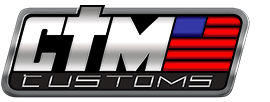Everything that you need to know about this issue and how to fix it
Death Wobble? You only know what I’m talking about if you have experienced it first hand, welcome to the club! Here we are going to discuss what causes a Jeep, or a truck for that matter to have what the automotive community refers to as Death Wobble. Here I will explain what is going on, how to inspect for the problem, and how to fix it.
When the tires are going down the road they are held straight under the vehicle with tie rod ends. When these tie rod ends wear out and can no longer hold the tire straight, the tire starts to flip flop within the “slop” that is in the worn out joint and all of a sudden when you hit the perfect speed and combine that with the smallest bump it will send the front end into a wild cycle of back and forth and up and down. Gripping the wheel, trying to slow down, everything is getting worse and you are sure that you are going to die.….Death Wobble.
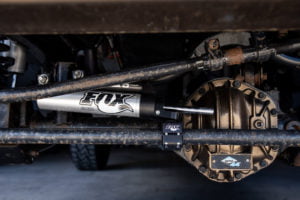
Death wobble is most common in Jeep Wranglers and Jeep Gladiators. What causes a Jeep to have death wobble is most often the smallest amount of play in one or more of the steering components. As tie rods, or the track bar wear out, there is a small amount of play that is created in the worn joint. All models of Jeeps have different issues, for instance, the Jeep TJ 1998-2006 is usually the track bar. The Jeep JK and JKU 2007-2018 usually have multiple tie rod failures, as well as track bars. The Jeep JL and JT 2018-Current seem like they come right off the assembly line with issues. In the JL and JT you will always find play in the tie rod end at the pitman arm and also you will see that there is an excessive amount of steering gear shaft side to side deflection, especially in lifted Jeeps with oversized tires. There is definitely a fix for all these issues. When replacing steering parts in an off road vehicle, you should always replace the OEM parts with upgraded aftermarket parts.
Things to Check
- All 4 Tie Rod Ends
- Tie rod end at the pitman arm
- Tie rod end on the end of the drag link (Right Upper or Inner)
- Right and left outer tie rods
- Track Bar
- Both ends
- Bolts are tight
- Hardware is same diameter as the hole and sleeve (Very common mistake)
- Steering Gear Play
- Ball Joints
- Uppers and Lowers
- Wheel Bearings
- Both Sides
- Steering Dampener
- Upper and Lower Control Arm Bushings
Here are some pointers on how to check steering components for issues.
Tie Rods and Track Bar:
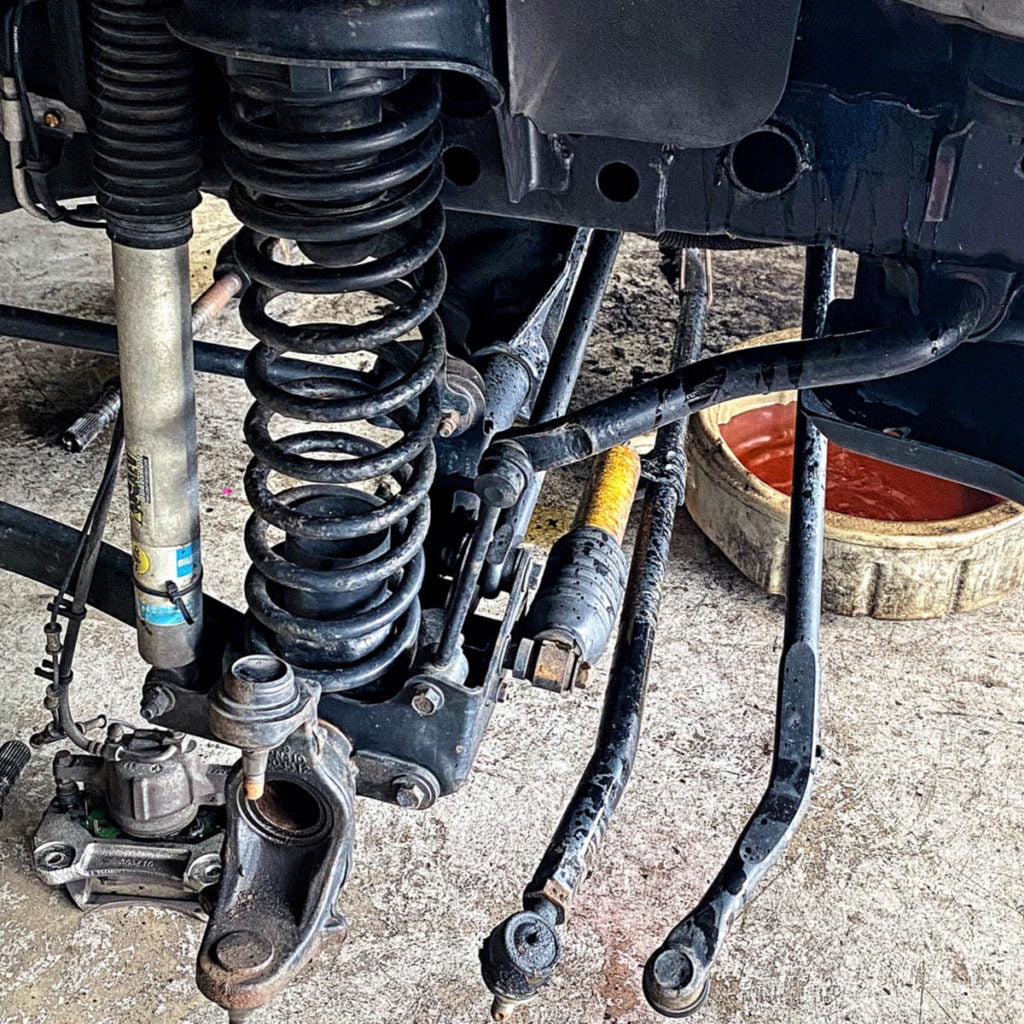
First start your Vehicle and have someone shake the steering wheel back and forth (shake not steer). While the wheel is being shaken, lay under the front of the vehicle and grab each tie rod end with your hand, there should be no play at all. If there is, it needs to be replaced. Same goes for both ends of the track bar. Some aftermarket track bars are hollow and you will see that they flex, this needs to be replaced with a solid, non hollow track bar. All hardware should be checked. Especially track bar, and control arms. Loose bolts will also result in Death Wobble.
Ball Joints and Wheel Hub Bearings:
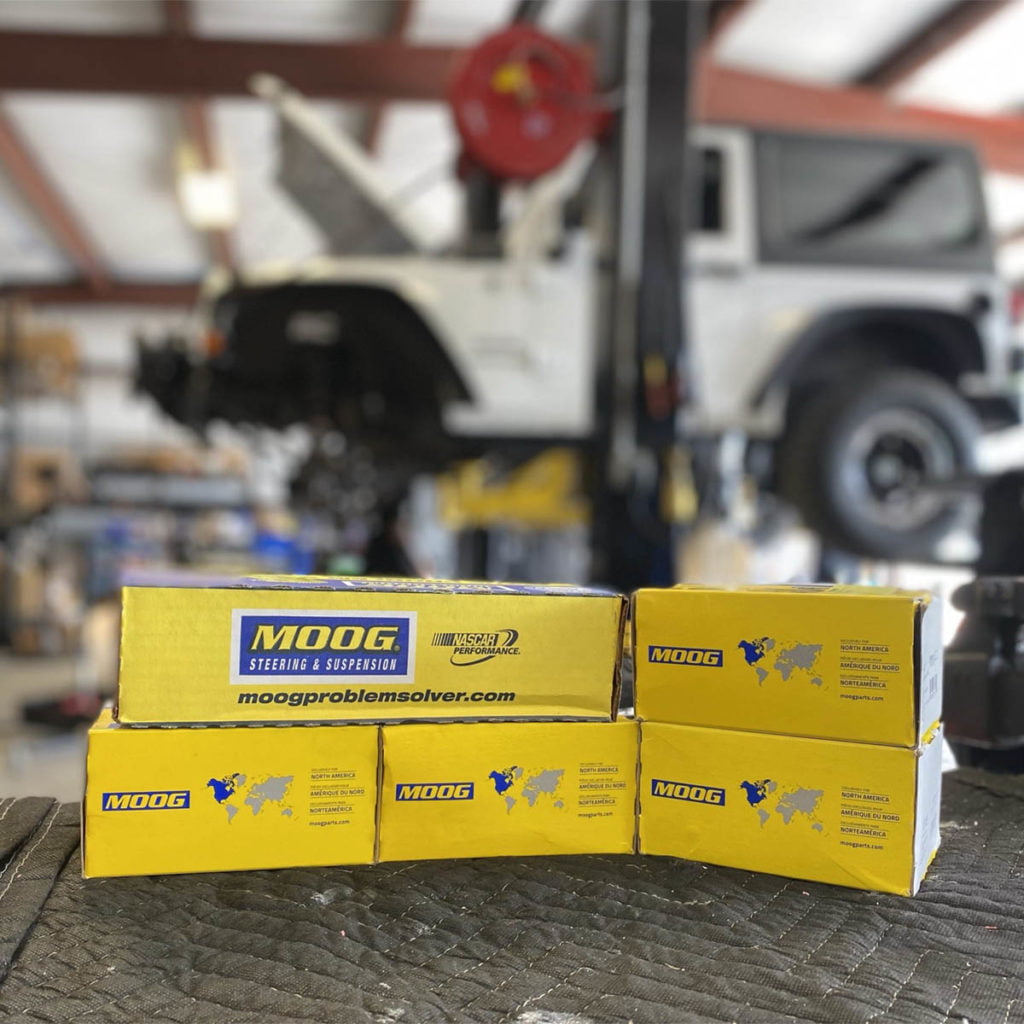
- Grab a jack and jack up one side of the axle so that 1 front wheel at a time is off the ground.
- Grab a pry bar and have your helper put the pry bar under the tire and pry the tire upwards, up and down, up and down, jouncing it over and over while you inspect the ball joints for play. The helper on the bar should also be feeling for play in the wheel bearings while prying.
- Next, grab the tire in multiple positions across from each other and wiggle the tire to see if the Hub Bearings have any play in them.
- Spin the tire feeling for any roughness. The Ball Joints and Hub Bearings should all be tight and smooth. If not, they need to be replaced.
Now I will say, some manufacturers of ball joints will say that a small amount of play in the ball joint is normal (common in OEM Ram 2500, 3500), now don’t go crazy here. If the ball joints are bad, it’s pretty obvious. If all 4 have equal, very minimal play, that’s the normal amount of play that I’m talking about.
Steering Gear Play:
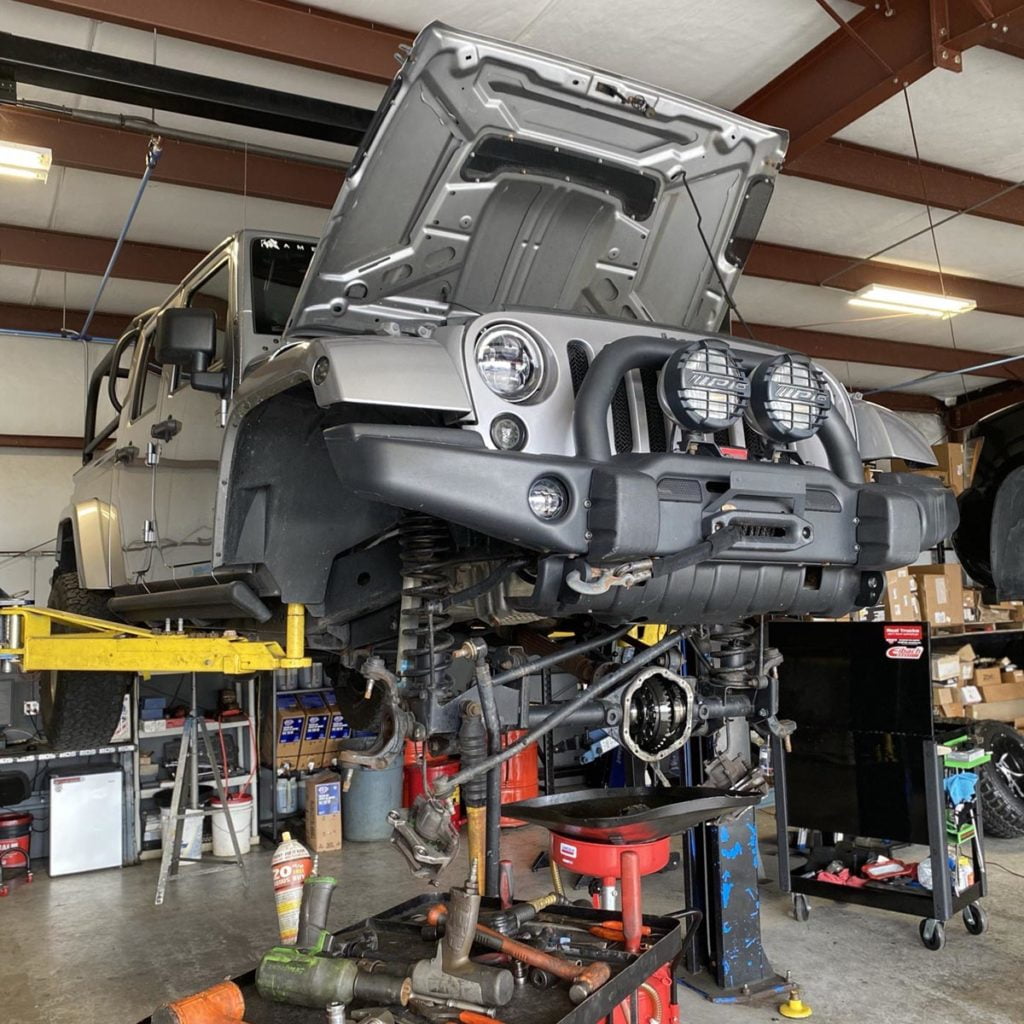
The steering gear has a main shaft called the sector shaft that holds the pitman arm. While the steering wheel is being shaken, see if the shaft stays midline or if it is moving back and forth. If it’s moving and NOT leaking, you can install a steering gear brace. This is designed to stop the side to side movement with the added benefit of adding more bracing to the frame side track bar bracket. If it’s moving AND leaking, it needs to be replaced.
Steering Dampener:
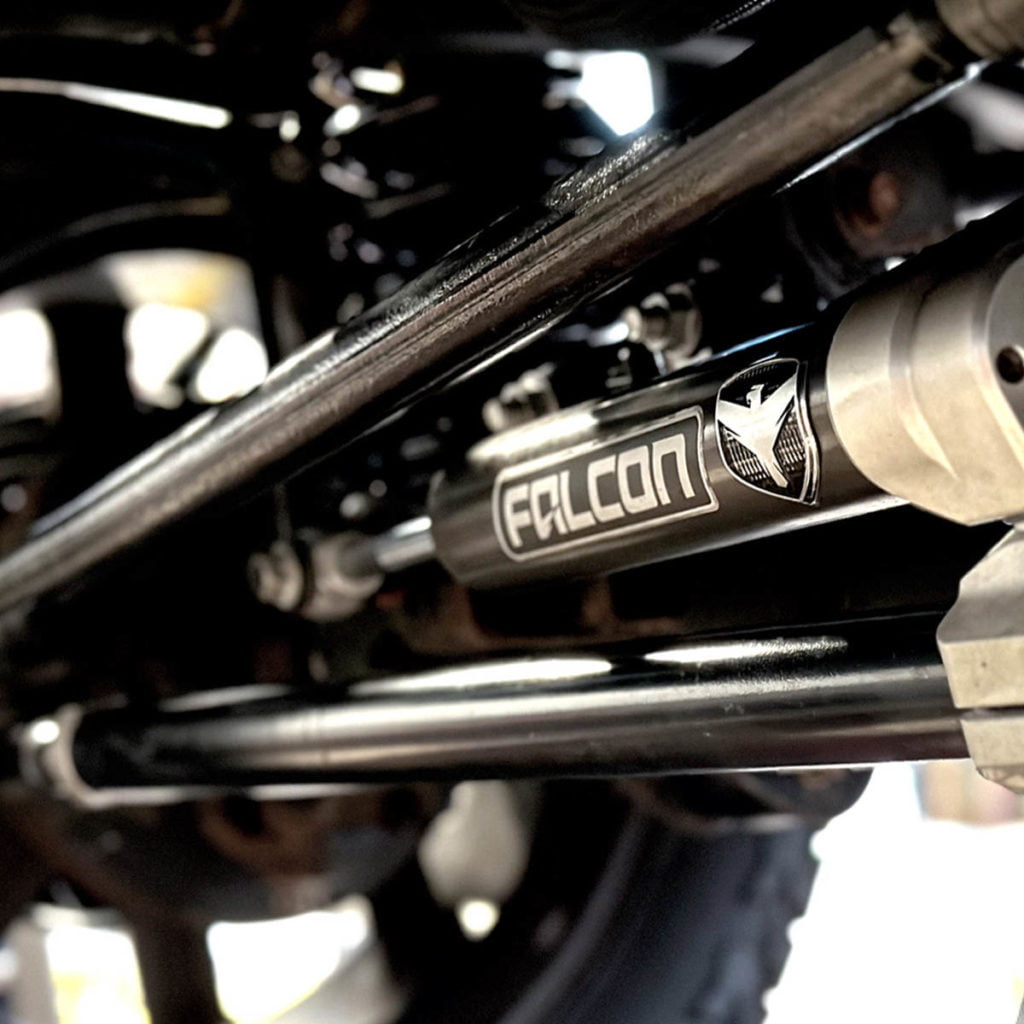
Steering dampeners or stabilizers should not be the go to “fix”. A steering stabilizer should be installed once the Death Wobble issue has been solved. In rare cases, the steering dampener is actually what will ultimately solve the problem (In this case, alignment needs to be checked).
To check the dampener, unbolt one end and push and check the resistance. Single dampeners should be neutral unlike a shock that will always extend when released. Dual dampeners (opposing) should work like a shock.
Control Arm Bushings:
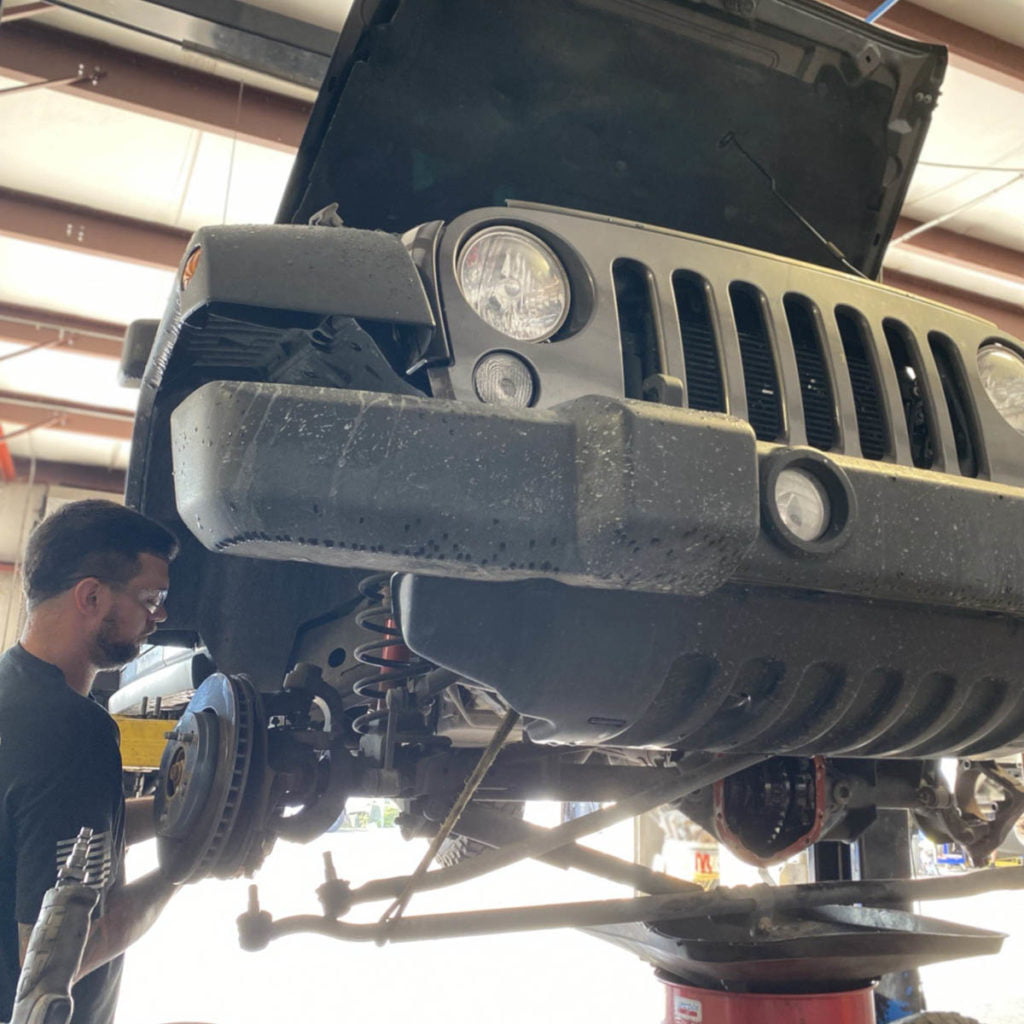
Control arm bushings are a little challenging to check, and a little dangerous if you are not careful. You are checking for looseness, dry rot, tearing, oil soaked and missing.
Factory arms and arms with rubber or poly bushings: Have someone get in the vehicle, put the transfer case in 4wd and with the brake applied and in drive, “Load up” the suspension and then let off. This will need to be done to “rock” the suspension back and forth. While laying next to and OUT OF THE WAY OF HARM, look for slop or movement in the ends in all 4 arms. All of the arms should have no movement. It will be pretty obvious if they need to be replaced. If you can’t really tell, they are probably still good.
Aftermarket Heim, Johnny, Ballistic style and re-buildable joints can be checked by using a rubber mallet to hammer on the joints. A good joint should make no noise. A bad joint will make a sharp noise. It needs to be rebuilt or replaced.
Jeep Death Wobble Fix Parts In Stock
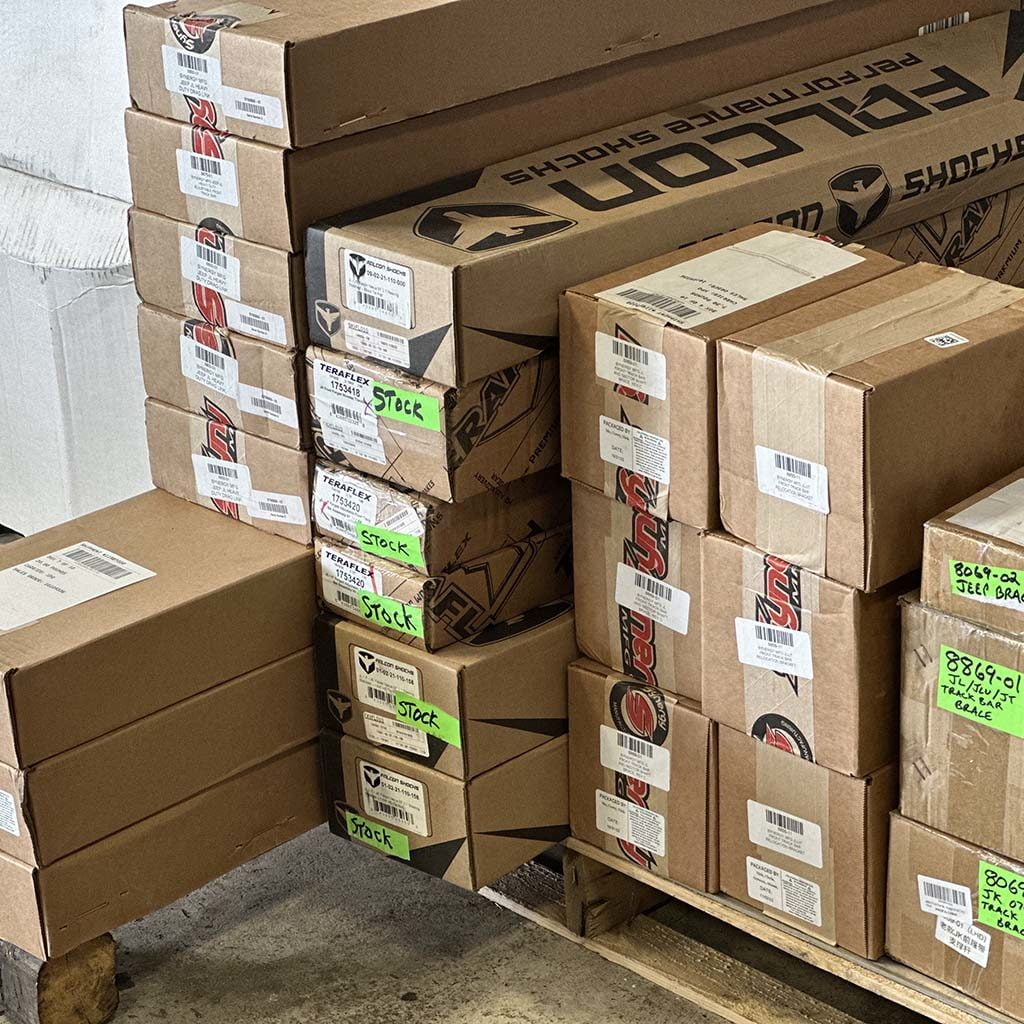
If you are experiencing a Death Wobble in your jeep, call the shop. We take walk-in inspections to verify this issue and keep most parts to fix it in stock.

